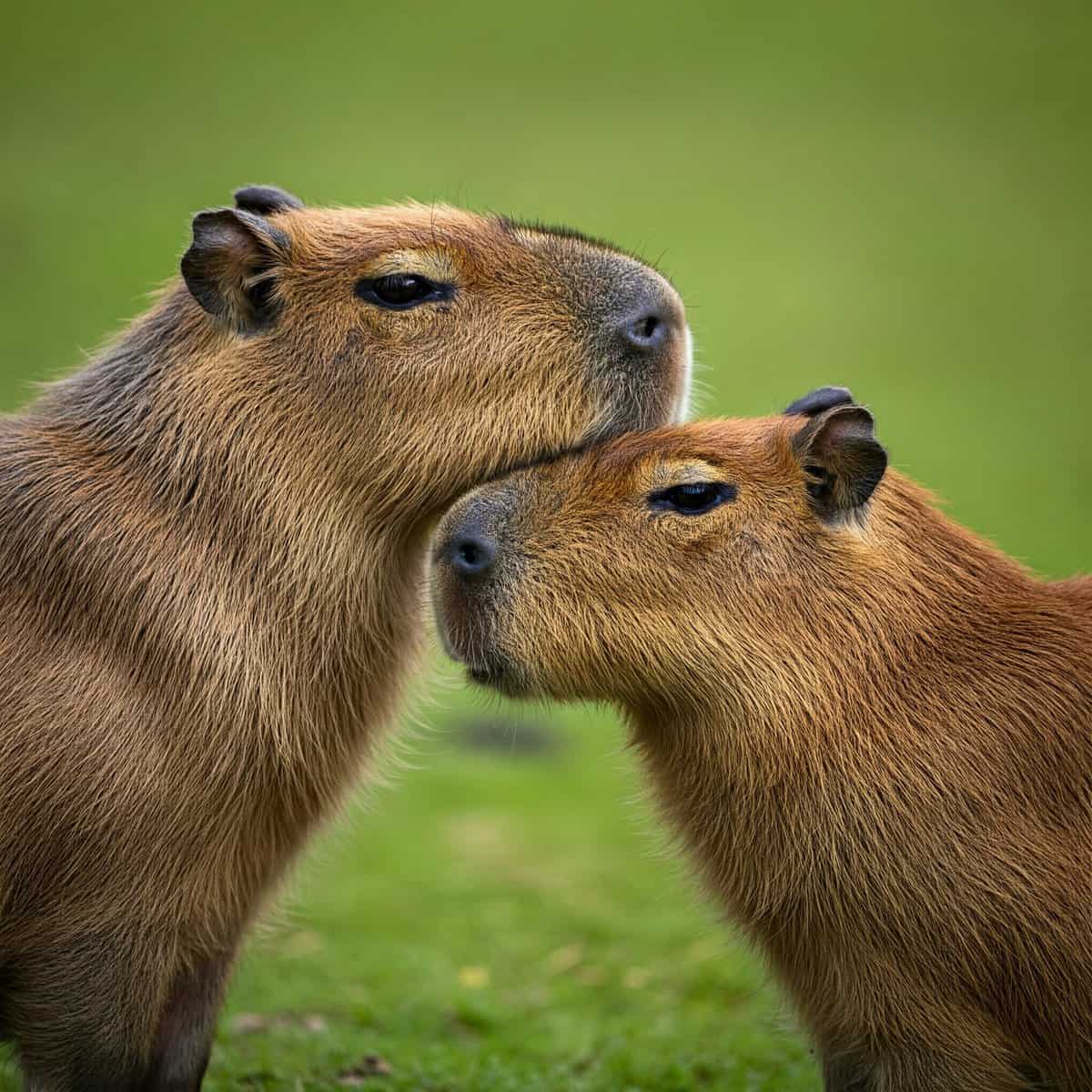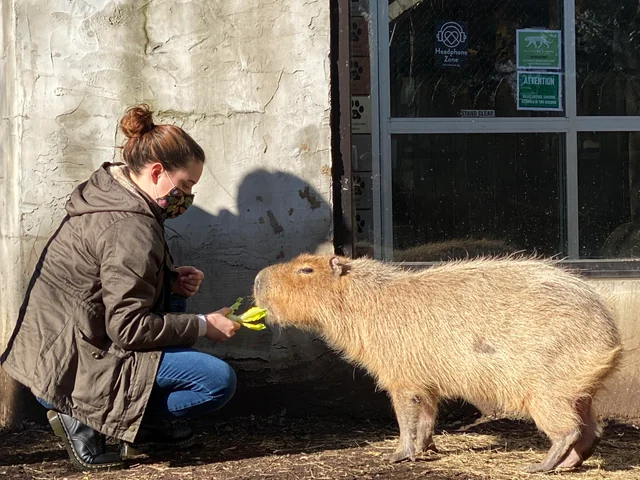Capybaras are highly social animals that rely on a complex system of communication to interact with one another and navigate their environment. As the largest rodent in the world, capybaras are known for their unique vocalizations, which play a crucial role in their social dynamics and overall survival. Understanding capybara communication is essential for anyone interested in studying or interacting with these fascinating creatures.
In addition to vocalizations, capybaras also use body language and scent marking to communicate with one another. By studying the various forms of capybara communication, researchers and enthusiasts can gain valuable insights into the behavior and social structure of these remarkable animals.
In this article, we will explore the different types of capybara vocalizations and delve into the meaning behind their barks, whistles, and purrs. We will also discuss how capybara communication contributes to their social dynamics and provide tips for effectively communicating with these unique creatures.
The Different Types of Capybara Vocalizations
Capybaras are capable of producing a wide range of vocalizations, each serving a specific purpose in their communication repertoire. These vocalizations can be categorized into three main types: barks, whistles, and purrs. Each type of vocalization conveys different messages and is used in various social contexts.
Barks are one of the most common vocalizations produced by capybaras and are used to alert others of potential threats or to express agitation. These short, sharp sounds are often accompanied by body language, such as raised heads and ears, and are typically emitted when capybaras feel threatened or stressed. Whistles, on the other hand, are used for long-distance communication and are often heard when capybaras are separated from their group or when they are trying to locate one another.
These high-pitched, melodious sounds can carry over long distances and help capybaras stay connected with their group members. Finally, purrs are soft, low-frequency vocalizations that are used in close-range communication, particularly during social bonding and grooming sessions. These gentle sounds convey a sense of contentment and relaxation, and are often heard when capybaras are resting or engaging in social activities with their group members.
Understanding the Meaning Behind Capybara Barks
Capybara barks are an important form of communication that play a crucial role in the social dynamics of these animals. When a capybara emits a bark, it is typically a sign of distress or agitation, and serves as a warning to other group members. Barks are often heard when capybaras feel threatened by predators or other potential dangers in their environment. In addition to alerting others of potential threats, barks can also be used to establish dominance within the group or to express frustration during social interactions.
By understanding the meaning behind capybara barks, researchers and enthusiasts can gain valuable insights into the behavior and social structure of these animals.
For example, studying the frequency and context of barks within a group can provide clues about the hierarchy and social dynamics of the capybara community. Additionally, being able to recognize the signs of distress or agitation in capybara barks can help caretakers and researchers ensure the well-being of these animals in captivity. Overall, barks play a crucial role in capybara communication and provide important information about their social interactions and environmental awareness.
Deciphering Capybara Whistles
Capybara whistles are another important form of communication that play a crucial role in the social dynamics of these animals. Whistles are high-pitched, melodious sounds that are used for long-distance communication and help capybaras stay connected with their group members. When a capybara emits a whistle, it is often a sign of seeking contact with other group members or trying to locate them within their environment. Whistles can also be used to express excitement or anticipation during social interactions or when exploring new areas.
By deciphering capybara whistles, researchers and enthusiasts can gain valuable insights into the behavior and social structure of these animals. For example, studying the frequency and context of whistles within a group can provide clues about the cohesion and coordination of the capybara community. Additionally, being able to recognize the signs of excitement or anticipation in capybara whistles can help caretakers and researchers understand the emotional states of these animals in captivity. Overall, whistles play a crucial role in capybara communication and provide important information about their social interactions and environmental awareness.
Interpreting Capybara Purrs
Capybara purrs are a gentle form of communication that play a crucial role in the social dynamics of these animals. Purrs are soft, low-frequency vocalizations that are used in close-range communication, particularly during social bonding and grooming sessions. When a capybara emits a purr, it is often a sign of contentment and relaxation, and serves as a way to express comfort and connection with other group members. Purrs can also be used to convey trust and affection during social interactions or when resting with other group members.
By interpreting capybara purrs, researchers and enthusiasts can gain valuable insights into the behavior and social structure of these animals. For example, studying the frequency and context of purrs within a group can provide clues about the intimacy and trust within the capybara community. Additionally, being able to recognize the signs of contentment and relaxation in capybara purrs can help caretakers and researchers understand the emotional well-being of these animals in captivity. Overall, purrs play a crucial role in capybara communication and provide important information about their social interactions and emotional connections.
How Capybara Communication Contributes to Social Dynamics
Capybara communication plays a crucial role in shaping the social dynamics of these animals. By using vocalizations, body language, and scent marking, capybaras are able to establish hierarchies, maintain group cohesion, and navigate their environment effectively. Understanding how capybaras communicate with one another is essential for gaining insights into their behavior and social structure.
For example, vocalizations such as barks, whistles, and purrs help capybaras stay connected with their group members, express emotions, and navigate their environment. By studying the different types of vocalizations and their meanings, researchers can gain valuable insights into the emotional states, social interactions, and environmental awareness of capybaras. Additionally, being able to recognize the signs of distress, excitement, or contentment in capybara vocalizations can help caretakers ensure the well-being of these animals in captivity.
Overall, capybara communication contributes to their social dynamics by providing important information about their behavior, emotional states, and environmental awareness. By understanding how capybaras communicate with one another, researchers and enthusiasts can gain valuable insights into the complex social structure and behavior of these remarkable animals.
Tips for Communicating with Capybaras
When interacting with capybaras, it is important to be mindful of their unique communication style and social dynamics. Here are some tips for effectively communicating with these fascinating creatures:
1. Observe their vocalizations: Pay attention to the different types of vocalizations produced by capybaras, such as barks, whistles, and purrs. By observing their vocalizations in various contexts, you can gain valuable insights into their emotional states and social interactions.
2. Respect their boundaries: Capybaras are highly social animals but also value their personal space. When interacting with them, it is important to respect their boundaries and allow them to approach you on their own terms.
3. Use positive reinforcement: When training or interacting with capybaras, use positive reinforcement techniques to encourage desired behaviors. This can help build trust and strengthen your bond with these animals.
4. Be patient: Capybaras have their own unique personalities and may take time to warm up to new people or situations. Be patient and allow them to acclimate at their own pace.
5. Provide enrichment: To encourage natural behaviors and stimulate their minds, provide capybaras with enrichment activities such as foraging opportunities, puzzle feeders, and sensory stimulation.
By following these tips for communicating with capybaras, you can build positive relationships with these remarkable animals while respecting their unique communication style and social dynamics.




